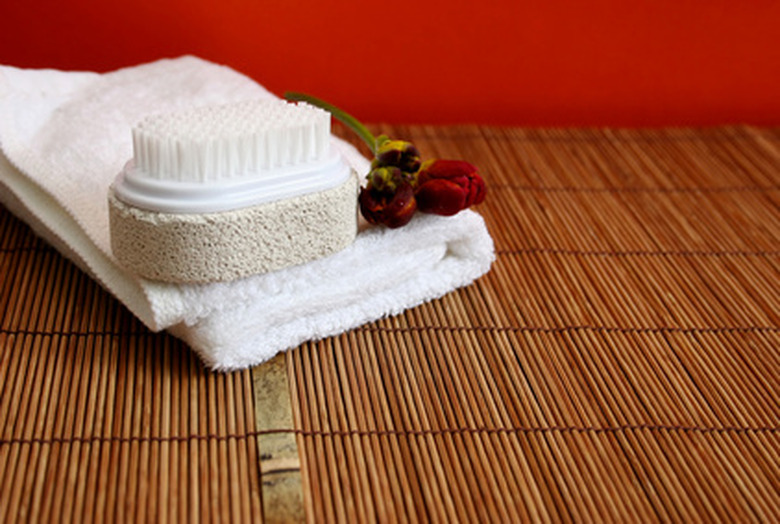What Is The Difference Between Pumice & Scoria?
When molten lava is released from under the Earth's surface, the results can be as incredible as they can be devastating: Entire cities can be destroyed, but at the same time volcanic eruptions can create beautiful island chains. On a smaller scale though, when molten lava is released to the surface of the Earth, it immediately begins to cool down. After the cooling is complete, you are left with igneous rocks – cooled lava that can take various forms depending on the way that lava was released, and what was contained within it when it came to the surface. Pumice and scoria are two of the more famous forms of igneous rocks, and though they're often confused for one another, they are very distinct.
TL;DR (Too Long; Didn't Read)
Scoria and pumice are both igneous rocks, produced by the cooling of magma. Commonly found across North America and known by a variety of different nicknames, from "lava rock" to "cinder stone," the two types of stones are formed when gas is trapped within lava as it cools – leading to a porous appearance. The distinction comes from how this gas is trapped: Scoria forms when an abundance of gas is trapped within a lava flow, while pumice results from a gas-rich, explosive eruption of foamy molten rock. It should also be noted that pumice is technically a glass, rather than a rock.
From Lava to Stone
From Lava to Stone
Of the three classes of rocks – igneous, sedimentary and metamorphic – igneous rock is the most common type found on the planet Earth. The land you live on is almost entirely igneous rock with a relatively thin layer of sedimentary rock on top of it. Created by the cooling of molten lava and stone particles, igneous rocks come in two forms – igneous intrusive, which solidifies deep beneath the planet's crust, and igneous extrusive, which comes up to the surface and cools rapidly. Igneous extrusive rock cools quickly because of the difference in pressure between the surface of the planet and the planet's interior. This may seem obvious, but it leads to an odd quirk; because igneous extrusive rock cools rapidly upon reaching the Earth's surface, it often traps gases from the planet's surface inside of it. This quirk results in porous igneous stones – like pumice and scoria.
Cinders and Scoria
Cinders and Scoria
If you've ever watched video of an erupting volcano, you may have seen the eruption followed by a stream of falling ash and what looked like slag or the burnt-out coals of a barbecue grill. The latter of these are commonly referred to as "cinders" or "cinder stone" — and these stones are scoria. Scoria stones can come in a wide variety of colors, including black, dark grey, browns and reds, and are formed in what can be called scoriac eruptions. Essentially, these are volcanic eruptions where an abundance of dissolved gas is released alongside the usual stone and molten rock. This dissolved gas is trapped within lava flows, attempting to rise while fighting against the rapidly cooling stone. It results in a stone that, once cool, is full of rounded cavities but is still heavy enough to sink in water. This contrasts with pumice stone, which holds slightly different properties.
Explosive Porous Pumice
Explosive Porous
Pumice
Pumice is also formed as a result of a volcanic eruption, but the eruptions that cause this white or light-grey stone are far more violent and explosive than those that create scoriac stones. When violent eruptions occur, they are generally caused by a massive buildup of gas pressure in addition to supercharged magma. When the magma breaks through to the Earth's surface and becomes lava, the change in pressure causes the gas, which hasn't dissolved as it does when scoria forms, to bubble up to the surface and form an almost frothy, foamy top to lava flows. When these messy flows finally cool, what lies at the surface is pumice. Technically, pumice is a glass rather than a proper stone, and the incredibly porous rocks are able to float in water for a time. Eruptions that can create pumice can sometimes send fragments of the rock hundreds of meters away, in a rain of stone, ash and dust.
Cite This Article
MLA
Flournoy, Blake. "What Is The Difference Between Pumice & Scoria?" sciencing.com, https://www.sciencing.com/difference-between-pumice-scoria-7335182/. 12 November 2018.
APA
Flournoy, Blake. (2018, November 12). What Is The Difference Between Pumice & Scoria?. sciencing.com. Retrieved from https://www.sciencing.com/difference-between-pumice-scoria-7335182/
Chicago
Flournoy, Blake. What Is The Difference Between Pumice & Scoria? last modified March 24, 2022. https://www.sciencing.com/difference-between-pumice-scoria-7335182/
